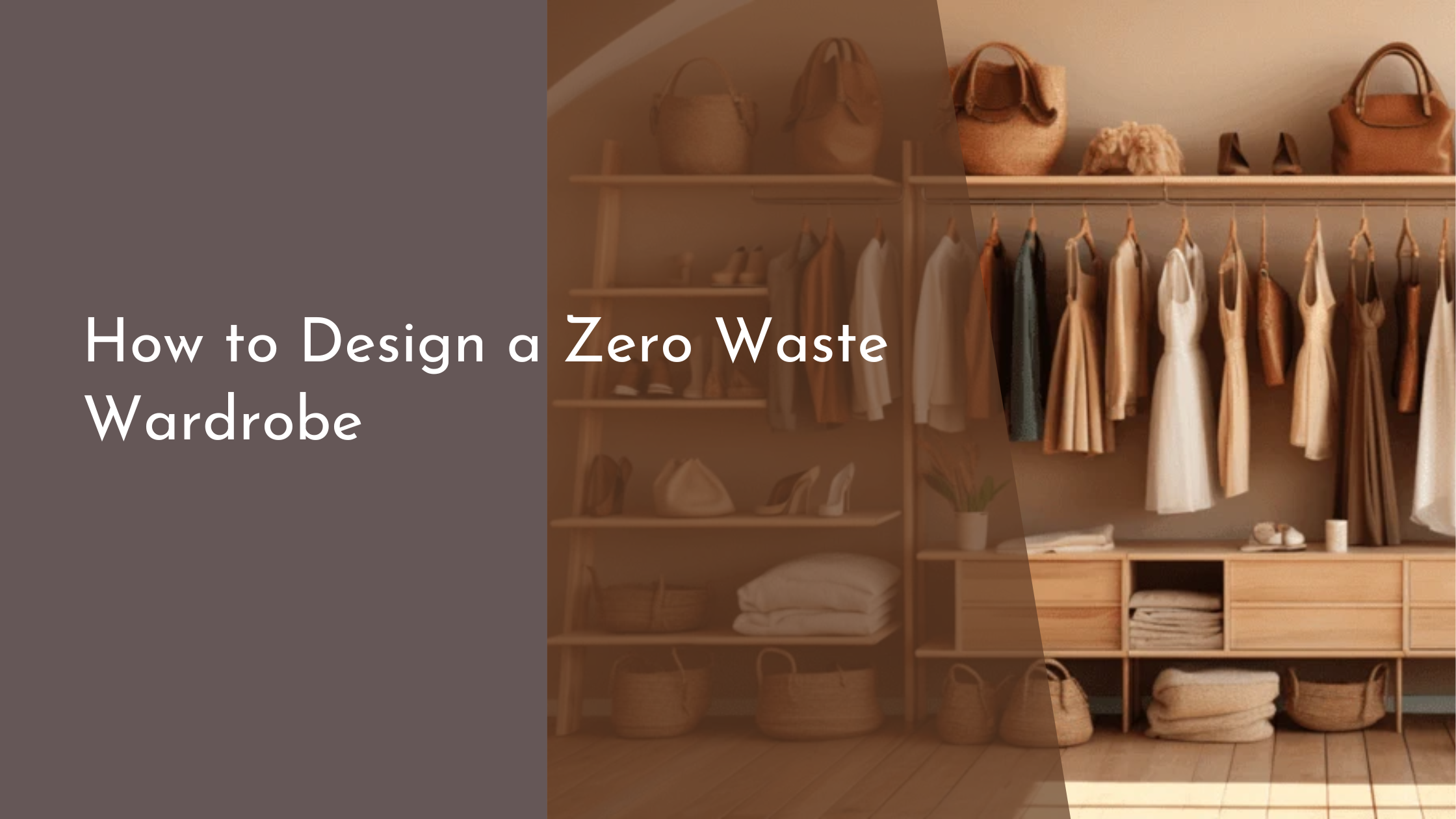How to Design a Zero Waste Wardrobe
In an age where sustainability is becoming more than just a trend, embracing a zero waste wardrobe is a practical and responsible choice. The movement towards reducing fashion’s environmental impact focuses on minimizing waste and maximizing the use of every garment. This guide is your comprehensive roadmap to designing a wardrobe that not only looks good but also does good for the planet. From understanding the core principles of zero waste fashion to creatively revamping your old clothes, let’s explore ways to transform your clothing choices into a sustainable lifestyle.
Understanding the Zero Waste Fashion Movement
The zero waste fashion movement is rooted in a commitment to minimize the environmental footprint of our clothing choices. This initiative recognizes the significant waste generated by the fast fashion industry, where millions of tons of textiles end up in landfills each year. Zero waste fashion advocates for responsible consumption, emphasizing the importance of buying less and choosing quality over quantity. By focusing on longevity and multi-functionality, this movement aims to reduce the need for constant new purchases.
Furthermore, zero waste fashion encourages consumers to be mindful of the lifecycle of their clothes. This means considering the origin of the materials, the conditions under which they were made, and their end-of-life options. By choosing to support brands that prioritize sustainable practices, consumers can influence the market towards more ethical and eco-friendly standards. Understanding these principles is the first step towards cultivating a wardrobe that aligns with the values of zero waste living.
Curating a Minimalist and Versatile Wardrobe
A minimalist wardrobe is not just about owning fewer items; it’s about owning the right items. The key to curating a minimalist and versatile wardrobe lies in selecting pieces that are timeless, well-made, and versatile enough to be styled in multiple ways. Consider building a capsule wardrobe—a small collection of essential clothing that never goes out of fashion, such as a classic white shirt, black trousers, and a neutral blazer. These items form the backbone of your wardrobe, allowing for countless outfit combinations with just a few additions.
In addition to selecting versatile pieces, focus on quality over quantity. Opt for durable fabrics and well-constructed garments that stand the test of time. Investing in quality may cost more initially, but it reduces the need for frequent replacements, ultimately saving money and reducing waste. A thoughtfully curated wardrobe not only enhances your personal style but also supports a sustainable lifestyle by minimizing fashion’s impact on the environment.
Selecting Sustainable and Ethical Materials
Choosing sustainable and ethical materials is a crucial aspect of designing a zero waste wardrobe. Sustainable materials, such as organic cotton, linen, hemp, and Tencel, are grown with minimal impact on the environment and often require fewer chemicals and water than conventional fabrics. These materials are biodegradable and compostable, ensuring they return to the earth safely at the end of their lifecycle. By opting for these fabrics, you contribute to reducing the negative environmental impact of the fashion industry.
Ethical considerations go hand in hand with sustainability. Support brands that ensure fair labor practices and safe working conditions for their workers. Look for certifications like Fair Trade, GOTS (Global Organic Textile Standard), or OEKO-TEX, which indicate adherence to ethical and environmental standards. By prioritizing sustainable and ethical materials, you can make informed choices that align with the values of a zero waste wardrobe and support a fair and just fashion industry.
Upcycling and DIY: Revamping Your Old Clothes
Upcycling is a creative and fun way to breathe new life into old clothes, turning them into unique, personalized pieces. Before discarding or donating clothes you no longer wear, consider how they could be transformed. An old pair of jeans can become trendy shorts, a dated dress can be tailored into a chic blouse, or a plain t-shirt can be painted or embroidered with a custom design. The possibilities are endless, and upcycling not only reduces waste but also allows you to express your creativity and individuality.
DIY projects also offer an opportunity to learn new skills and appreciate the craftsmanship involved in garment creation. Whether it’s sewing, knitting, or dyeing, these skills can help you repair, modify, and personalize your wardrobe. Online tutorials and workshops provide a wealth of knowledge for beginners eager to try their hand at sustainable fashion practices. By embracing upcycling and DIY, you contribute to a circular fashion economy, where materials are continuously repurposed and waste is minimized.
Designing a zero waste wardrobe is a rewarding journey that combines creativity, mindfulness, and sustainability. By understanding and embracing the principles of the zero waste fashion movement, curating a minimalist wardrobe, selecting sustainable materials, and exploring upcycling and DIY projects, you can significantly reduce your environmental impact. Every conscious choice you make contributes to a more sustainable future, proving that fashion can be both stylish and responsible. As you embark on this path, remember that each small step is a meaningful stride toward a more sustainable world.

